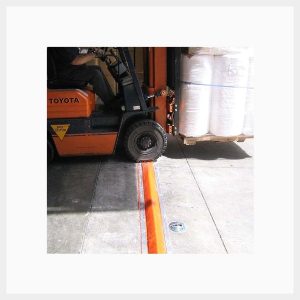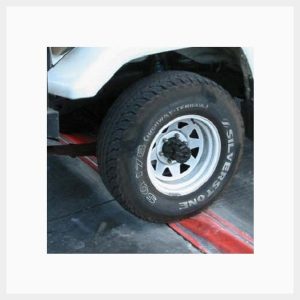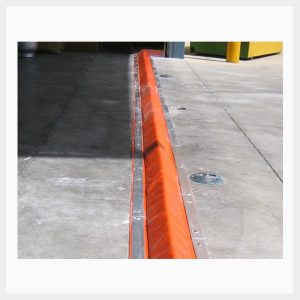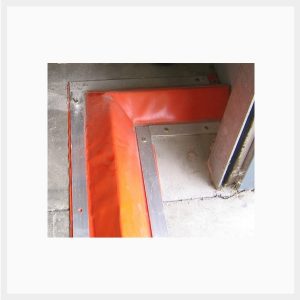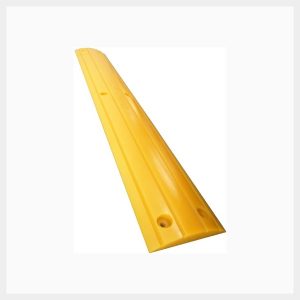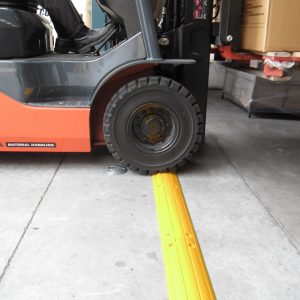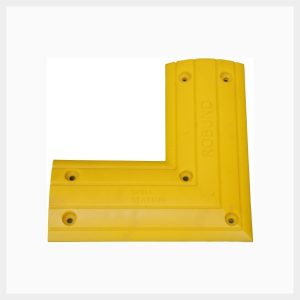Permanent Bunding is a low-profile retaining barrier that is fixed to the floor. It’s tall enough to contain a large spill, but still low enough so workers and industrial vehicles can pass over without restraint.
It’s important to know that permanent bunding should not act like an obstacle, it should be able to exist without interfering with your daily activities. When you buy from Spill Station, you're investing in a design that is safe, while not getting in your way.
Bunding is essential in certain industries as it prevents a liquid from exiting an area where a spill occurs, allowing for easy spill management. The liquid comes in contact with a barrier and this stops the spread, allowing for containment.
Bunding allows for easy access, letting employees correctly address the spill and also ensures worker and environmental safety and compliance. Spill Station offers portable bunds, collapsible bunds and permanent bunds, always of the highest quality,
Bunds are also sometimes referred to as secondary containment facilities, and to remain in line with the Australian standards, the bunds must be impervious to the content of the substance stored and contain 110% of the total content in the largest bund, or 25% of the total store in the bund.
For the best permanent bunding solutions, Spill Station is the best choice in Australia.
Many people are aware that bunding is largely used for spill control and the anticipation of any spills that may occur where large amounts of chemicals are held. But do you know the vitality of bunding, and more important permanent bunding, and why purchasing from the best Australian manufacturer is important?
Bunding is Vital To Safety
We know that bunding is basically a product for preventing spills, which is especially useful for businesses that need to store liquids like oil and fuel or dangerous chemicals. SO you can think of permanent bunding to be like a retaining wall. It's designed to not have to be moved as much as collapsible bunding, which is made to be temporary and utilised in remote workplaces as well as business that need to move their stored liquids frequently.
The best part of investing in bunding is that it’s designed to be durable and is made from non-corrosive substances that will last even if multiple spills occur concurrently.
The Different Types of Permanent Bunding
There are various different bunding items on the market, made for specific applications.
Rubber Floor Bunding
This kind of bunding is reasonable for any application where heavy vehicles are expected to enter the bunded region. Rubber floor bunding strong and will be driven over often. Often sold in 2 or 5 m increments, it’s easy to install and durable. It has contoured edges that make it less of a tripping hazard and can easily be driven over. This type of bunding is often used in washrooms and where liquids are stored.
Flexible Floor Bunding
Flexible floor bunding is often used where forklifts are common, as it moves and springs back into shape after being driven over and handles repeated use due to its flexible nature. This is a great option for factories and warehouses as it doesn’t slow down vehicle operators and still works well to contain spills.
Which One Do You Need?
If you aren’t sure which type of bunding your workplace needs, you can contact Spill Station for a risk assessment and we can help you figure out how to stay safe. By making sure your workplace is correctly bunded, you can remain legally safe, and keep your workers and facility safe, as well as the environment.
Contact Spill Station
If you need bund walls, put them in at your facility but don't have anyone on staff who knows how to do it, you can hire a professional company to do it for you. This Is where spill station comes in. Remember, you’re liable for any leaks that may happen and any damage this causes to your workplace, workers, and the environment.
Spill Station offers 10m, 5m and 2m compressible drive over bunding as well as corner pieces, and the same in solid drive over bunding. Essentially offering both rubber floor bunding and flexible floor bunding options.
Remember, that as an Australian manufacturer, Spill Station’s products are all made for Australia, our weather, and the legal requirements the country puts forward for workplace safety. By purchasing from Spill Station, you're being safe and compliant.

